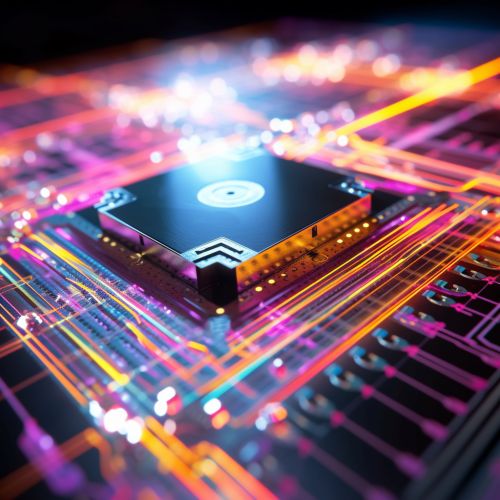Integrated Quantum Photonics
Introduction
Integrated Quantum Photonics is a branch of quantum photonics that focuses on the integration of quantum photonic devices on a single chip. This field of study is a combination of quantum optics and integrated optics, which aims to control quantum states of light on a photonic chip. The integration of quantum photonic devices on a chip offers several advantages including scalability, stability, and the potential for mass production.


Quantum Photonics
Quantum Photonics is a field of research that involves the use of photons (light particles) to carry quantum information. This field of study is based on the principles of quantum mechanics, which describes the behavior of particles at the quantum level. Quantum photonics is used in various applications including quantum computing, quantum communication, and quantum sensing.
Integrated Optics
Integrated Optics is a field of research that involves the integration of optical devices on a single chip. This field of study is based on the principles of optics, which describes the behavior of light and its interaction with matter. Integrated optics is used in various applications including telecommunications, data processing, and sensing.
Integrated Quantum Photonics
Integrated Quantum Photonics combines the principles of quantum photonics and integrated optics to create quantum photonic devices on a chip. These devices are capable of manipulating quantum states of light, which can be used for various applications including quantum computing, quantum communication, and quantum sensing.
Advantages of Integrated Quantum Photonics
The integration of quantum photonic devices on a chip offers several advantages. These include:
- Scalability: Integrated quantum photonic devices can be scaled up to create larger quantum systems. This is crucial for the development of practical quantum technologies.
- Stability: Integrated quantum photonic devices are more stable than their bulk counterparts. This is because they are less susceptible to environmental factors such as temperature changes and vibrations.
- Potential for mass production: Integrated quantum photonic devices can be fabricated using standard semiconductor manufacturing techniques. This means that they can potentially be mass-produced, reducing the cost of quantum technologies.
Applications of Integrated Quantum Photonics
Integrated Quantum Photonics has a wide range of applications. These include:
- Quantum Computing: Integrated quantum photonic devices can be used to build quantum computers, which are capable of solving certain problems faster than classical computers.
- Quantum Communication: Integrated quantum photonic devices can be used to transmit quantum information securely over long distances.
- Quantum Sensing: Integrated quantum photonic devices can be used to create quantum sensors, which are capable of measuring physical quantities with unprecedented precision.
Future of Integrated Quantum Photonics
The field of Integrated Quantum Photonics is still in its early stages, but it has the potential to revolutionize various areas of technology. As research in this field progresses, we can expect to see more practical applications of integrated quantum photonics in the near future.
